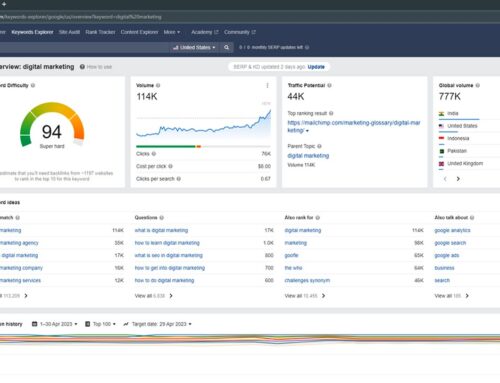ChatGPT is a powerful language model developed by OpenAI based on the GPT-4 architecture. It can be used for various tasks such as text generation, chatbot development, content creation, and more. This article will provide a comprehensive guide on how to get started with ChatGPT.
Table of Contents
Introduction to ChatGPT
ChatGPT is a state-of-the-art language model developed by OpenAI[^1^]. It is designed to provide human-like conversational responses, natural language understanding, and text generation capabilities. Here are a few key features of ChatGPT:
- Built on the GPT-4 architecture
- Utilizes transformer models for text generation
- Can handle complex conversational tasks
- Has applications in chatbots, content creation, language translation, and more
API Access
To use ChatGPT, you’ll need access to the OpenAI API. The API allows developers to integrate ChatGPT into their applications and projects. You can sign up for the API access at the OpenAI website[^2^]. The API has both free and paid subscription plans, offering different levels of access to the ChatGPT functionalities.
Setting up ChatGPT in Python
To get started with ChatGPT in Python, follow these steps:
- Install the OpenAI Python library: First, install the OpenAI Python library using the following command:
pip install openai
- Set up API Key: After signing up for API access, you will receive an API key. Export this key as an environment variable in your terminal or command prompt:
export OPENAI_API_KEY="your-api-key"
- Import and Initialize the OpenAI library: In your Python script or notebook, import the OpenAI library and set the API key as follows:
import openai openai.api_key = "your-api-key"
Usage Examples
Now that you have set up the OpenAI library, you can start using ChatGPT for various tasks. Here are a few examples:
Text Generation
To generate text using ChatGPT, you can use the openai.Completion.create() function with the desired parameters:
response = openai.Completion.create(
engine="text-davinci-002",
prompt="Once upon a time,",
max_tokens=50,
n=1,
stop=None,
temperature=0.7,
)
Chatbot Development
For chatbot development, you can use the openai.ChatCompletion.create() function to create a conversation:
response = openai.ChatCompletion.create(
engine="text-davinci-002",
messages=[
{"role": "system", "content": "You are a helpful assistant."},
{"role": "user", "content": "Who won the world series in 2020?"},
],
max_tokens=50,
n=1,
temperature=0.7,
)
Optimizing ChatGPT Interactions
To get the most out of ChatGPT, follow these best practices:
- Use appropriate
temperaturesettings: Lower values (e.g., 0.2) make the output more focused and deterministic, while higher values (e.g., 0.8) make it more random and creative. - Limit response length with
max_tokens: To control the response length, adjust themax_tokensparameter. - Experiment with different engines: OpenAI offers multiple engines with varying capabilities, so experiment with different engines to find the one that suits your needs best.
- Use system and user messages effectively: For chatbot applications, provide a system message to set the behavior of the assistant, and use user messages to give context and instructions.
Ethical Considerations and Safety Guidelines
As ChatGPT is a powerful tool, it is important to follow ethical guidelines and safety measures when using it:
- Be aware of potential biases: ChatGPT may generate responses that reflect biases present in the training data. Be cautious and review the outputs for potential biases.
- Do not use ChatGPT for malicious purposes: Abide by the OpenAI usage policies1 and refrain from using ChatGPT for activities that cause harm or spread misinformation.
- Implement content moderation: Implement content moderation measures to filter out inappropriate or harmful content generated by the AI.
- Respect user privacy: Ensure that user data is handled responsibly and in compliance with data protection laws and guidelines.
Resources
To learn more about ChatGPT and its applications, consult the following resources:
- OpenAI: Official Website
- OpenAI API: Documentation
- OpenAI: Usage Policies
- OpenAI GitHub: Python Library
References
- OpenAI. (n.d.). Usage Policies. https://platform.openai.com/docs/usage-policies
Community and Support
To engage with the ChatGPT community, ask questions, and stay up-to-date with the latest developments, consider the following options:
- OpenAI Community: OpenAI Forum
- Reddit: r/OpenAI
- Stack Overflow: openai tag
- OpenAI Blog: Blog
Advanced Usage and Customization
If you want to customize and fine-tune the ChatGPT model to better suit your specific use case or domain, follow these steps:
- Fine-tuning: OpenAI provides guidelines on fine-tuning ChatGPT using your own dataset. Refer to the Fine-tuning Guide for more information.
- Integration with other frameworks: ChatGPT can be integrated with popular frameworks like TensorFlow and PyTorch. To learn more about these integrations, visit the OpenAI Cookbook on GitHub.
- Creating custom applications: You can use ChatGPT as a foundation to build custom applications like virtual assistants, language translation tools, and content generators. Explore various projects and examples in the OpenAI Community Showcase.
Final Thoughts
ChatGPT is a powerful language model that can be used for a wide range of applications, from chatbots and content creation to translation and natural language understanding tasks. By following the guidelines outlined in this article, you can get started with ChatGPT and leverage its capabilities for your projects. Remember to follow ethical guidelines, experiment with different settings, and engage with the community for support and inspiration.










